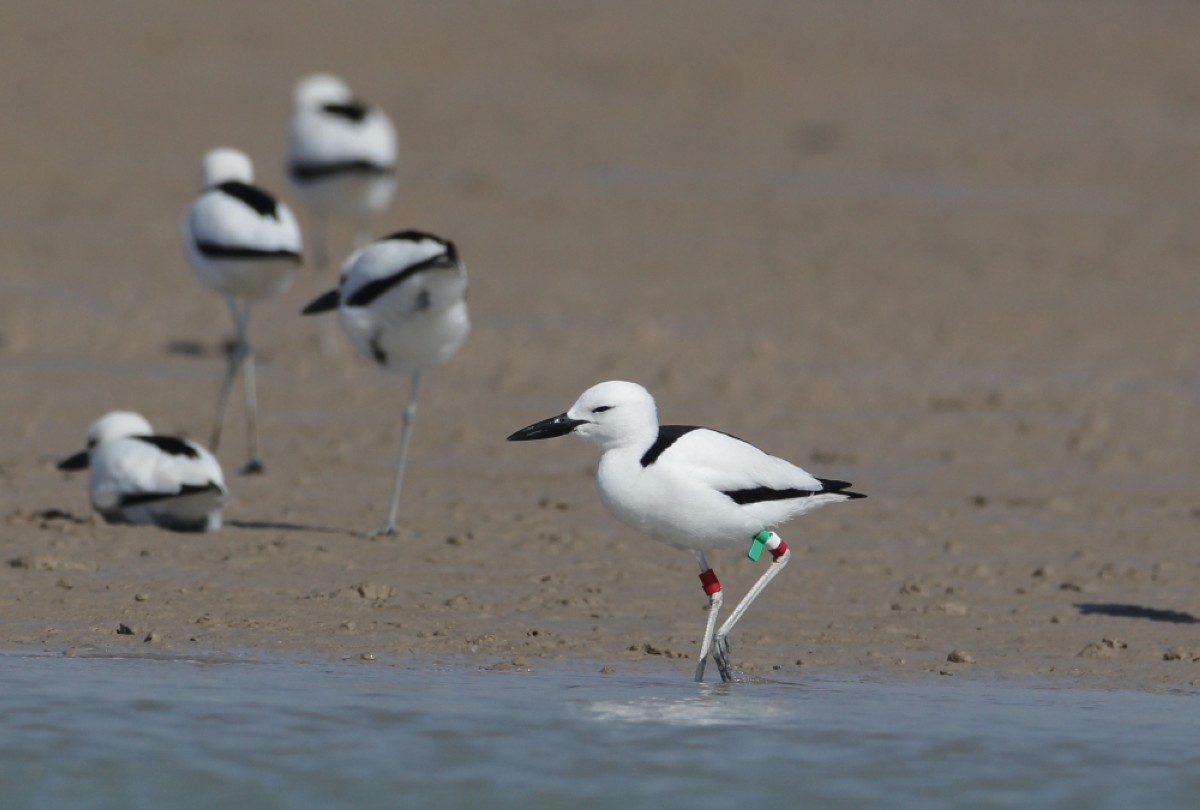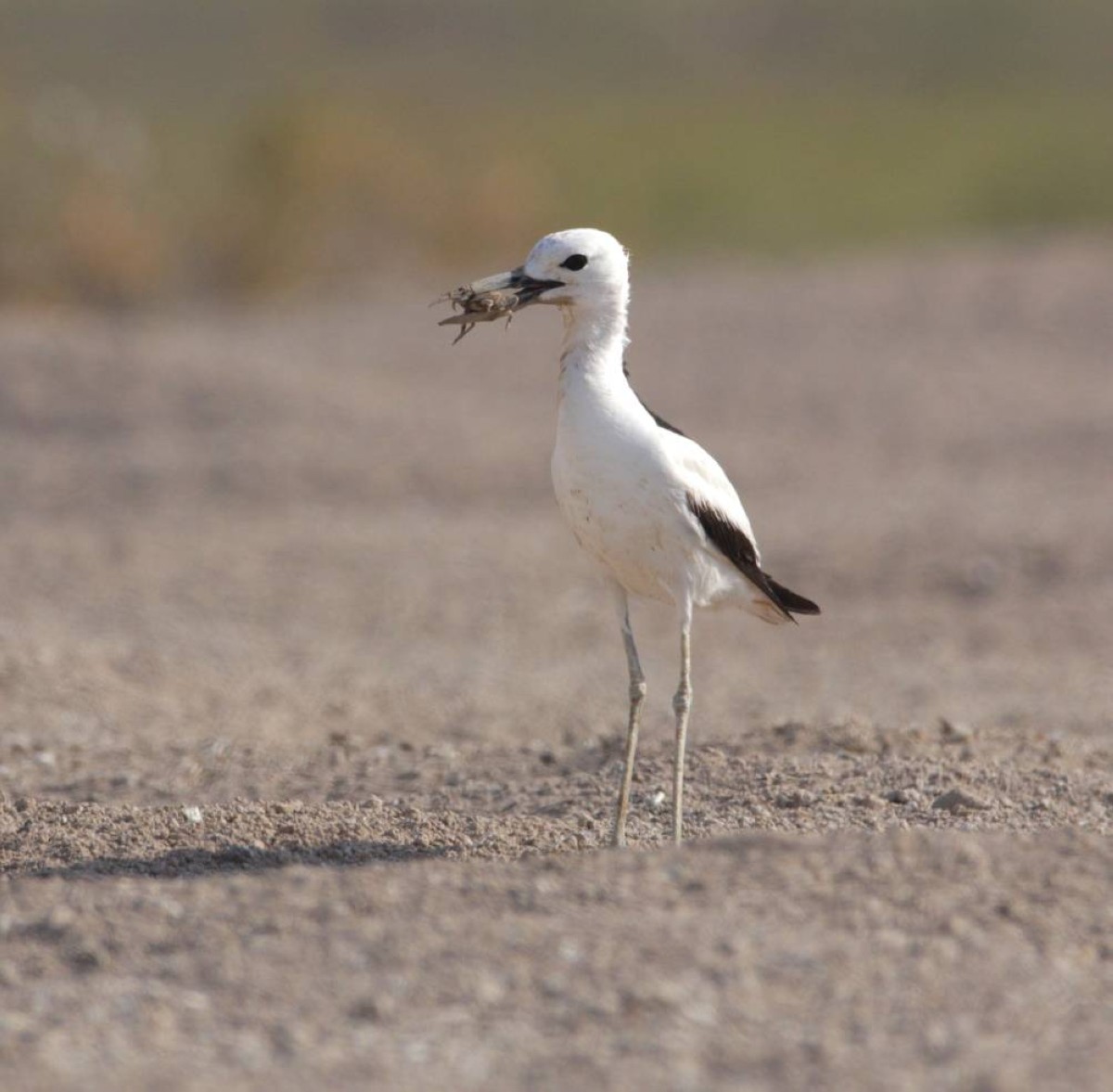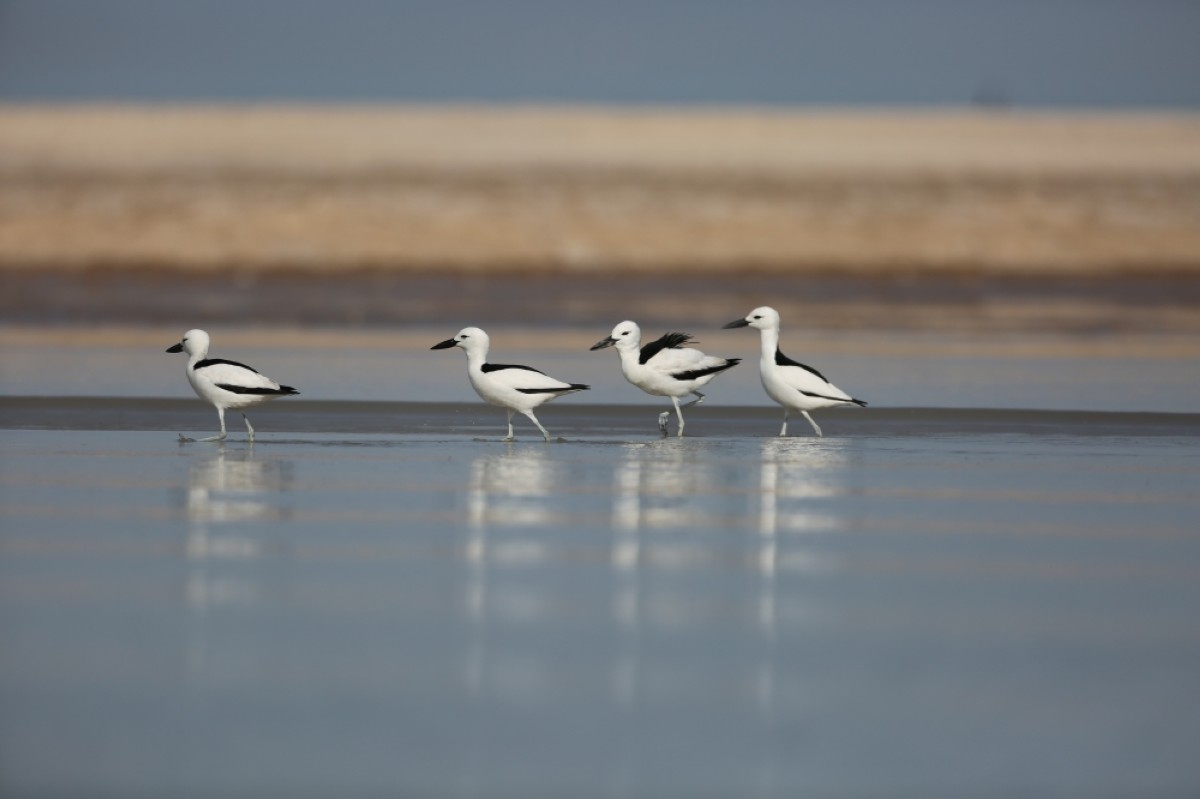Spotting crab plovers is a rare event for photographers, given the species’ limited global population of only 60,000 to 70,000 birds. However, for environmental researcher and photographer Khalid Saleh Nasrallah, the bird is a familiar sight. It is both a common resident and a summer visitor to Kuwait, especially on Boubyan Island, where up to 10,000 birds have been recorded.
"Very little research has been done on this bird,” said Nasrallah, who has spent 21 years photographing and documenting every stage of the crab plover’s life, from nesting to flight. "What intrigued me most is that it lives under unusual conditions, digging burrows up to two meters below the surface to create its habitat,” he explained. The burrow serves as the nest, where the bird lays only a single egg. Recalling his research challenges, Nasrallah shared how he waded through muddy shores on foot, as boats could not access these remote areas.






Since beginning his work in 2002, Nasrallah’s research led to the discovery of approximately 3,000 crab plover nests in Kuwait by 2013 — a finding he described as "the largest record for this species worldwide”. The bird’s population is primarily concentrated in the Arabian Gulf region, with major habitats in the UAE, Kuwait and Iran. Its range also extends to India, the Red Sea, Farasan Island in Saudi Arabia, Egypt, Djibouti and as far as Kenya.
While Kuwait’s coastal mudflats serve as the crab plover’s breeding grounds from May to July, the bird migrates to Oman during winter. "I eagerly await its return each year for the chance to photograph it,” said Nasrallah.
The bird’s breeding behavior is also remarkable. Both the male and female incubate the egg for about 33 days in harsh conditions, maintaining temperatures of 32 to 33 degrees Celsius until it hatches. The crab plover is typically observed in small groups along the shore, foraging for crabs and mudskippers — its preferred prey.
Among the countless birds Nasrallah has photographed, one of his favorite images is of a banded crab plover. This bird was tagged by a specialized Dutch team to monitor its migration route from Kuwait to Oman.

